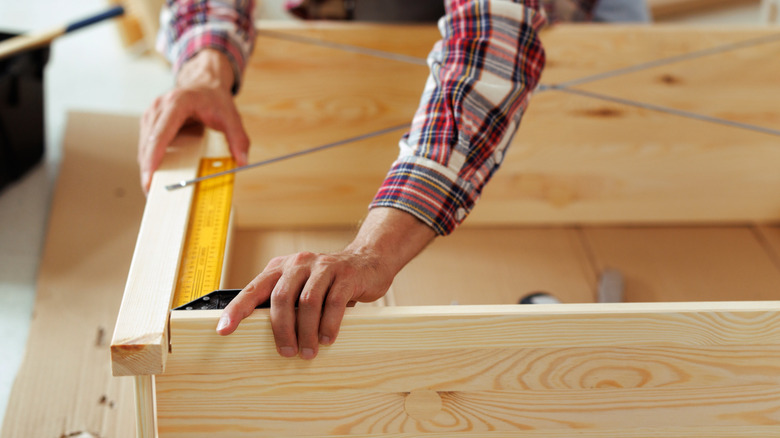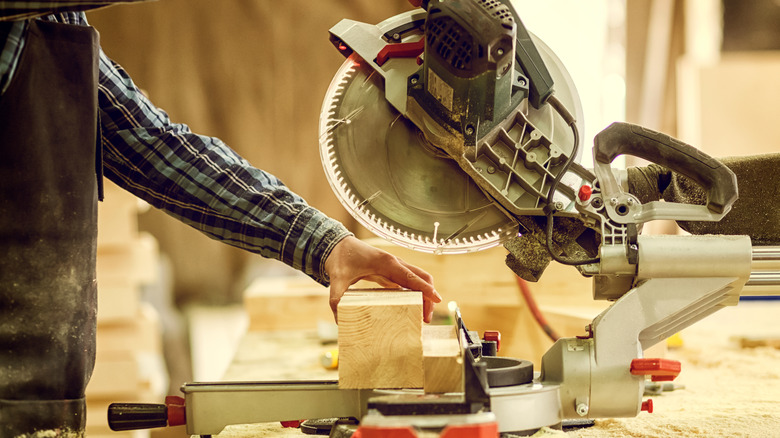The Stunning Adjustable Shelf Bookcase That Even A Beginner Can DIY
When it comes to furniture, the term "adjustable" is most often associated with desks for home offices, dining tables with hidden leaves, chairs, and shelving units, but why aren't most things made to be adjustable? The beauty of DIY is that they can be! YouTuber The Awesome Orange had the brilliant idea to build a bookcase with shelves that can be moved up or down to fit larger or smaller decor items. The floor-to-ceiling bookcase is made entirely out of 2x10 boards, with wood screws and a bit of glue keeping it all together.
This project is great for someone who changes their decor with the seasons and holidays. It's also good for bookworms that have ever-growing collections with titles of varying heights, collectors looking to display their toys and statues, or someone who doesn't have plans for a rotating display but would still appreciate having the option in the future. The design ranks high on the versatility and aesthetics meter, but very low on the difficulty scale. After choosing the perfect wood for your DIY bookshelf needs, grab a miter saw and a drill and follow along.
Learning from the builder's mistake
Instead of editing out a mistake, The Awesome Orange shows the entire build process 1.5 times to warn builders what to look out for. After cutting pieces of Knotty Alder down to size, milling the lumber (running them through a jointer and planer to make sure they are all square, flat, and straight), gluing them together, and planing them again to make shelves, she moves on to the frame. This is where the hiccup happens.
The frame is made of 2x10 lumber with 34 evenly spaced pieces on both internal walls, each approximately four inches in length. These short pieces form the slots that the shelves slide in and out of. While cutting, the stop block on the builder's saw moved, which meant that the pieces did not line up properly once installed and the build had to be restarted. The finished product is sturdy and the shelves are level, but the final cost is higher than it needed to be. Here's how to avoid it in your own DIYs.
Choosing the right stop block
As the name suggests, stop blocks are devices used in woodworking that allow for repeated cuts of the same length because they act as a barrier for the boards to press up against. Some woodworkers fashion makeshift stop blocks out of clamps and scrap wood, while others use jigs machined specifically for the job. Choosing the right stop block and having it properly secured to your workstation could save you time and material.
A popular readymade stop block among woodworkers online is the Katz-Moses Universal No Deflection Stop Block from KM Tools. According to reviews, the product doesn't shift (deflect) like other T-track stop blocks, which means that cuts are more precise. When not in use, the Katz-Moses stop block stores out of the way behind your saw fence instead of protruding upwards. For those who don't use T-tracks, there is also a handy tutorial from 731 Woodworks that demonstrates how to create an effective stop block out of a few bolts, scrap wood, a 123 block, and a jig knob.

